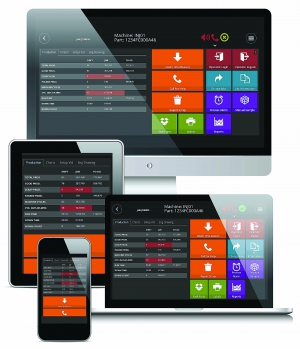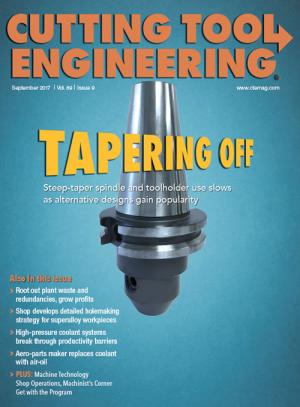Thinking of purchasing shop floor control software but don’t know where to start? You’ve likely heard the terms MOM (manufacturing operations management) and MES (manufacturing execution system), but a quick internet search returns a confusing range of definitions. It doesn’t help that their standards, as defined in ISA-95 and the Purdue Enterprise Reference Architecture, are filled with terms such as object models, process control levels, physical and logical architectures, data flows and other technobabble.
Kathie Poindexter, senior product marketing manager at Epicor Software Corp., Austin, Texas, said the confusion is understandable. “Certainly within the ERP [enterprise resource planning] world, the terms MOM and MES tend to get used interchangeably. Many people think they are synonymous, that we should stick with one term and eliminate the other, but they do actually mean different things.”
To her, MES is a subset of MOM. While MES collects shop floor data and presents a real-time view of what’s going on in a shop, MOM looks at the bigger picture and is more concerned with the end-to-end manufacturing process. A number of ERP systems contain features that put them squarely into MES and even MOM territory.

Virtually all MES software can be run on mobile devices, including Epicor’s Mattec MES software, which integrates with the company’s core ERP product. Image courtesy of Epicor Software.
MOM often offers QC and overall equipment efficiency functionality, advanced planning and scheduling, and a range of analytical tools, giving management the information necessary to make better decisions.
Meanwhile, the ERP umbrella covers both, pulling in accounting, purchasing, warehousing and engineering for a complete enterprise management solution.
Some confusion over terminology comes from software suppliers. Companies that pioneered MES in the 1980s have since expanded their systems to include what most would consider true MOM functionality, but they are hesitant to leave their MES heritage, Poindexter said.
“It’s important not to get hung up on the terminology,” she said. “Whether it’s ERP, MES or MOM, manufacturers should focus on getting the functionality they need. And once they have it, they should work closely with their vendor—who has, hopefully, had experience with similar customers—to make sure they’re using the appropriate KPIs [key performance indicators], based on their business goals and that they can get the information out to the right people in an effective manner. These systems are able to return massive amounts of data; if the elephant is too big to eat, it can quickly become overwhelming.”
Siemens Product Lifecycle Management Software Inc. also clearly defines MOM and MES. The Plano, Texas, company markets both, with MES fitting in MOM’s enterprisewide arms. Raffaello Lepratti, vice president of business development and marketing for MOM, said it’s an increasingly important tool for businesses needing ironclad, end-to-end visibility of production operations and quality management, and that it is a prerequisite to realizing digital transformation.
Because MOM’s hands wrap around all aspects of the shop floor (with MES as the fingers), all details of the manufacturing process can be overseen and swift action can be taken on problems. “Consider a car manufacturing line with a 60-second cycle-time and hundreds of workplaces connected in a sequence,” Lepratti said. “Every worker must be able to react as soon as there’s a nonconformance to understand what products were affected, whether to proceed with production and what rework might be needed. Events like these affect material flow, scheduling, equipment and employee performance—everything. Here it is of paramount importance to have an integrated quality management and scheduling system on top of MES to ensure proper orchestration of such events and support the decision-making process.”
Because of integration among ERP, MOM and MES, it’s often hard to know where one ends and another begins. Siemens doesn’t offer an ERP system but works closely with providers that do, and its MOM portfolio is tightly integrated with ERP systems. Lepratti said in certain cases the demarcation line between ERP and MOM has been controversial, leaving areas of uncertainty and subjectivity in integration approach.
Various definitions may remain, but most experts agree that as the industrial internet of things expands, hardware and software become more affordable and big data from the shop floor becomes easier to harvest, software systems such as MES, MOM and ERP will become increasingly relevant to manufacturers of all sizes.
Related Glossary Terms
- process control
process control
Method of monitoring a process. Relates to electronic hardware and instrumentation used in automated process control. See in-process gaging, inspection; SPC, statistical process control.


